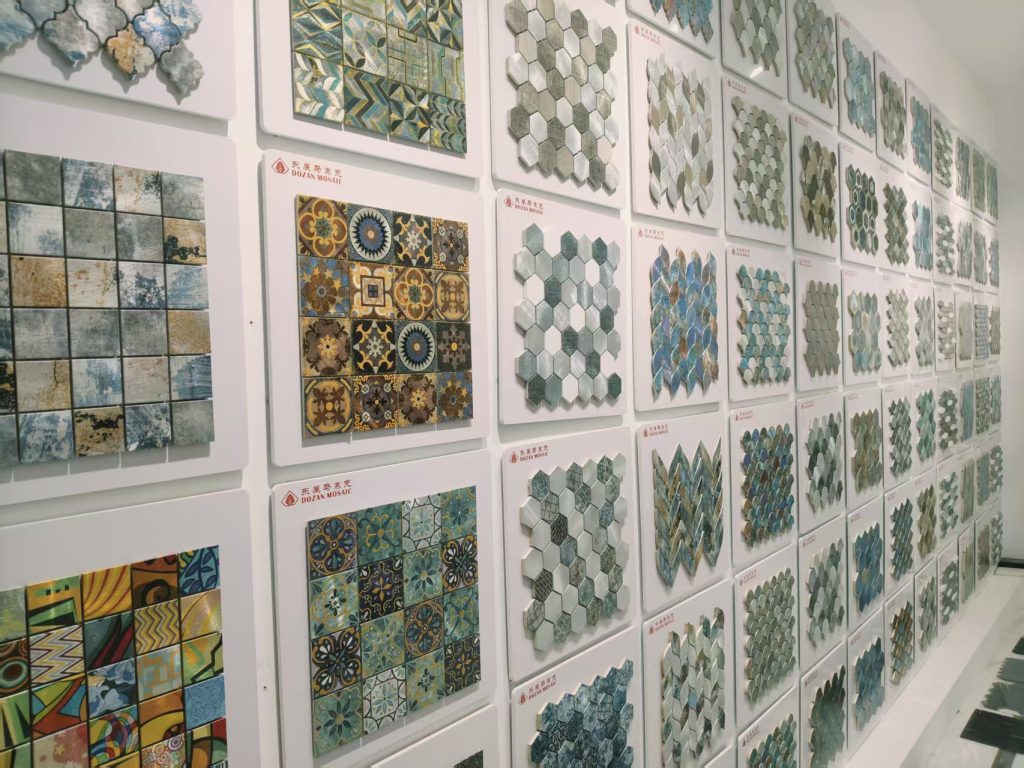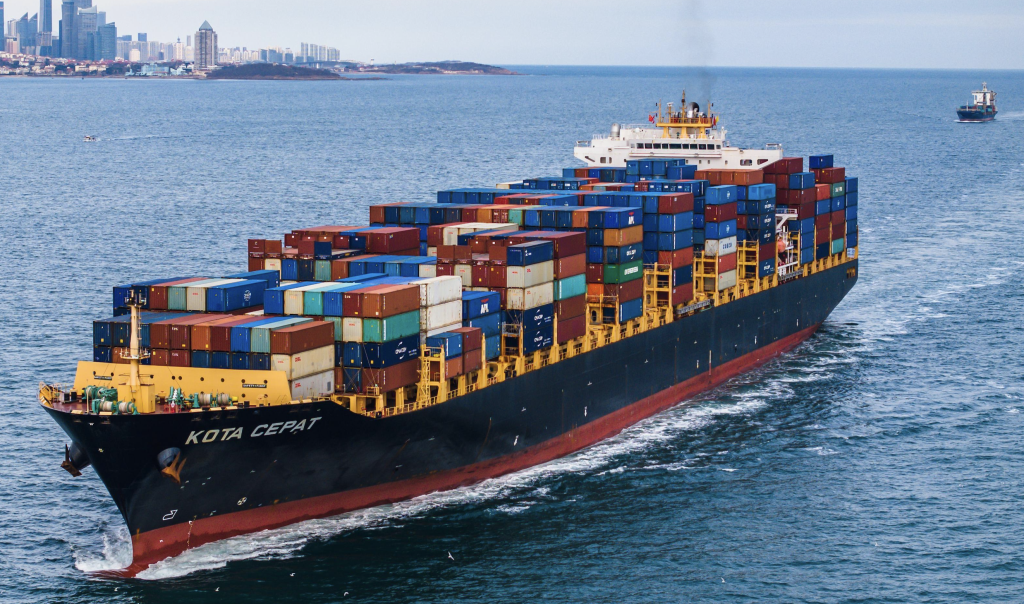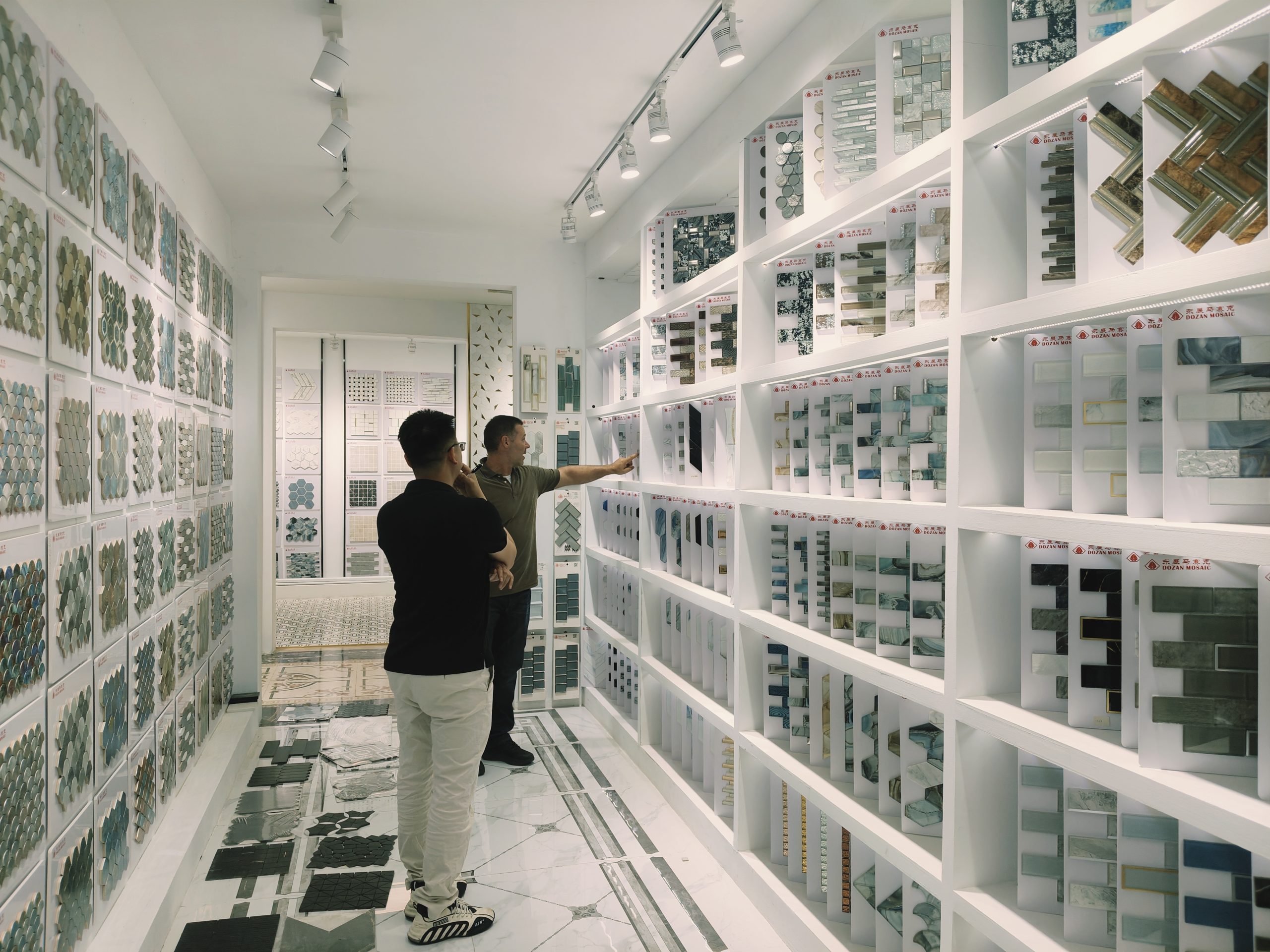Sourcing Porcelain Tiles in China
If you’re reading this, chances are you’re planning to source porcelain tiles from China – maybe for your construction project, retail distribution, or renovation business.
As someone who has visited countless tile factories across Foshan, I can tell you this upfront:
✅ The opportunity is real – competitive prices, endless designs, and mature manufacturing
❌ But the risks are real too – quality mismatches, supplier fraud, hidden costs, and shipment delays
This guide will walk you through practical, actionable steps to make your sourcing journey in China smoother, safer, and more profitable.
Why Buyers Source Porcelain Tiles from China
✔️ Competitive Pricing. Due to mass production, Chinese factories offer some of the world’s best prices per square meter.
✔️ Variety and Trends. From Italian marble look-alikes to terrazzo and matte cement tiles, designs are updated quickly to follow global trends.
✔️ Mature Supply Chain. In cities like Foshan, entire districts are dedicated to tiles, with packaging factories, logistics agents, and QC companies all nearby.
Before You Start: Define Your Requirements Clearly
Many importers waste time because they approach suppliers without specific requirements. Here’s what to prepare:
🔹 Tile Type & Finish: Polished, matte, glazed, double loading, full body?
🔹 Size & Thickness: E.g. 600x600mm, 800x800mm, thickness 9.5mm or 10mm?
🔹 Water Absorption Rate: For porcelain tiles, ≤0.5% is standard.
🔹 Slip Resistance: Especially important for outdoor or commercial projects.
🔹 Packing Requirements: Carton with wooden pallets? Labeling format?
🔹 Certifications: CE (Europe), SASO (Saudi Arabia), CCC (China market), ISO – ask what you need for customs clearance and projects.
📝 Practical Tip:
Create a one-page Product Specification Sheet summarising all requirements to send to potential suppliers. This avoids misunderstandings later.

Where and How to Find Reliable Suppliers
🔻 Common Mistake:
Only relying on Alibaba search rankings. Many top factories don’t actively advertise there.
✅ Better Approaches:
- Attend Trade Shows.
- Canton Fair (Guangzhou, Apr & Oct): Meet large exporters.
- Foshan Ceramic Expo (April & October): See hundreds of tile factories in one place.
- Visit Foshan Directly.
- Foshan is the ceramic hub of China, with large showrooms and factory outlets.
- Spend 3-5 days to visit shortlisted factories for product checking and relationship building.
- Use Sourcing Agents.
- If you can’t visit, hire a reputable sourcing agent based in Foshan to shortlist, audit, negotiate, and inspect on your behalf.
- Check Factory Background.
- Ask for business license, export license, and factory audit certificates.
- Request live video calls to see their showroom and production line.
Practical Concerns Buyers Face
🔻 Quality Differences. The mass production may have slight colour variation compared to your sample.
🔻 Hidden Costs. Port charges, customs duties, local delivery fees – often overlooked in budgeting.
🔻 High MOQs. Many factories only accept full container loads (~1000-1500 m² per design).
🔻 Delayed Lead Times. Peak season or raw material shortages can delay your shipment.
🔻 Supplier Communication. Time zone differences and misinterpretations lead to errors in orders.
🔻 Scams. Paying unknown suppliers without proper vetting can result in losing your money entirely.
How to Avoid These Pitfalls (Practical Actions)
Here is what experienced buyers actually do:
✅ Inspect Before Shipment. Hire a third-party inspection company (SGS, BV, or local agents) to check colour consistency, thickness, packaging, and labelling before payment balance.
✅ Use Trade Assurance or L/C. On platforms like Alibaba, use Trade Assurance for payment protection. For larger orders, use Letter of Credit to reduce upfront risk.
✅ Request Production Samples. Not just showroom samples. Ask for samples directly from the production batch before container loading.
✅ Negotiate Payment Terms. Standard is 30% deposit + 70% before shipment. For trusted suppliers, negotiate partial payment after BL release to manage cashflow.
✅ Book Container Early. Especially before Chinese New Year (Jan-Feb) and Golden Week (Oct), when port congestion is common.
✅ Build Supplier Relationships. Buyers who communicate frequently and visit suppliers get priority production and better prices over time.
✅ Calculate Landed Cost Properly. Include:
- FOB cost (factory to port)
- Sea freight cost
- Port handling & customs clearance fees
- Inland delivery to your warehouse or project site
Shipping & Logistics Essentials

🔹 Tile Loading Weight.
Tiles are heavy – a 20ft container usually loads ~25 tons. Overloading leads to shipping rejections or fines.
🔹 Packaging.
Ensure tiles are packed in strong cartons, with fumigated wooden pallets for easy unloading and reduced breakage risk.
🔹 Trade Terms.
- FOB: Supplier covers delivery to port + export clearance.
- CIF: Supplier covers freight + insurance to your port.
- EXW: You pick up from the factory and arrange everything onwards.
🔹 Freight Forwarders.
Use an experienced forwarder familiar with tile shipments to avoid customs delays or paperwork issues.
That is an excellent question. Most sourcing articles focus on suppliers and prices but technical material selection is equally critical, especially for professionals like you who want practical and engineering-level insight.
Here is an overview of how to source tiles in China technically, focusing on material selection, manufacturing process, and product suitability:
Technical Considerations When Sourcing Porcelain Tiles in China
Understand Tile Composition
✅ Porcelain Tiles
- Made from finer, denser clay fired at higher temperatures (~1200-1300°C).
- Water absorption ≤0.5% (makes them suitable for wet and outdoor areas).
- Stronger and more durable than ceramic tiles.
✅ Ceramic Tiles
- Made from coarser clay, fired at lower temperatures (~800-1000°C).
- Water absorption ≥3%.
- Suitable for indoor walls or low-traffic floors.
🔍 Practical Tip: Always confirm the water absorption rate, as this defines whether it is technically porcelain or ceramic under ISO13006 / EN14411 standards.
Selection Based on Application
| Application | Recommended Tile Type | Technical Factors |
|---|---|---|
| Indoor floor (residential) | Glazed porcelain / ceramic | PEI rating ≥3, slip resistance R9-R10 |
| Commercial floor (heavy traffic) | Full body porcelain or double loading | High breaking strength, wear resistance PEI ≥4 |
| Outdoor floor / swimming pool deck | Unglazed or structured porcelain | Low water absorption ≤0.5%, slip resistance R11-R13 |
| Bathroom wall/floor | Glazed porcelain | Easy cleaning glaze, slip resistance R10 for floor |
| Facade cladding | Full body porcelain slab | UV resistance, freeze-thaw resistance |
🔍 Practical Tip:
Ask suppliers for technical data sheets (TDS) showing water absorption, breaking strength, modulus of rupture, slip resistance (DIN 51130 / ASTM C1028), and frost resistance if used outdoors in freezing climates.
Manufacturing Types in China
✅ Glazed Porcelain
- Surface is glazed for design and protection.
- Most common due to design versatility.
✅ Full Body (Through Body) Porcelain
- Colour and pattern run through the entire tile thickness.
- Better for heavy traffic and visible edge cuts.
✅ Double Loading Porcelain
- Two layers of powder pressed together, making it denser.
- High mechanical strength, usually used for commercial projects.
✅ Polished vs. Matt vs. Lappato
- Polished: Shiny, reflective, more slippery.
- Matt: Non-reflective, better slip resistance.
- Lappato (Semi-polished): Mix of gloss and matt for a subtle sheen.
Tile Grades and Quality Classes
Chinese factories usually classify tiles as:
- AAA Grade (First choice). Best quality, minimal defects.
- AA Grade (Commercial grade). Small colour variation or micro pinholes, acceptable for many markets.
- A or B Grade. Visible defects, often sold at low prices for domestic low-end projects.
🔍 Practical Tip: Always specify AAA Grade for export projects unless your market accepts AA for budget installations.
Quality Inspection Focus Points
When inspecting tiles in China, ensure:
- Size Consistency. ±0.5mm difference is standard tolerance.
- Flatness & Warpage. Especially for large format tiles (600x1200mm+).
- Surface Defects. Pinholes, glaze bubbles, uneven gloss.
- Colour Variation. Ensure all batches match approved sample under daylight conditions.
- Breaking Strength. For floors, especially commercial areas.
- Packaging. Strong cartons, clear labeling, fumigated pallets for export.
Special Technical Requests to Suppliers
If you have specific project requirements:
🔹 Request Slip Resistance Tests (DIN / ASTM / ISO) certificates.
🔹 Ask for digital print files or design catalogues to select consistent patterns.
🔹 If ordering slabs or large formats, confirm modulus of rupture and thickness tolerance to avoid installation failures.
🔹 For facade tiles, request UV resistance, freeze-thaw cycle reports, and anchoring system recommendations.
Technical Tips for Material Selection
✅ Always request technical data sheets and production samples before bulk orders.
✅ Clarify end-use application to suppliers to ensure suitability.
✅ When sourcing for projects, consider maintenance, anti-stain, and slip resistance alongside aesthetics.
✅ Work with suppliers who understand international standards (EN, ISO, ASTM) to reduce compliance risks in your market.
Sourcing tiles from China is not just a buying decision – it’s a technical specification process.
Knowing the composition, manufacturing methods, product grades, and application suitability will protect you from costly quality failures and build your reputation as a professional importer or project manager.
Tips
✅ Start with a Trial Order. Test quality, service, and communication before committing to large volumes.
✅ Prepare a QC Checklist. Define what your inspector must check (dimension tolerance, glaze defects, packaging standards).
✅ Plan Realistic Timelines. Standard production is 20-30 days. Add shipping (15-30 days depending on destination) + customs clearance buffer.
✅ Be Respectful but Firm. Professional communication earns respect and priority from suppliers in China.
Sourcing porcelain tiles from China isn’t just about finding the cheapest price. It’s about:
✔️ Finding the right factory
✔️ Communicating your needs clearly
✔️ Inspecting diligently
✔️ Building a relationship based on trust
When done correctly, you’ll gain a cost-effective, high-quality supply chain that strengthens your business competitiveness in your market.


Leave a Reply